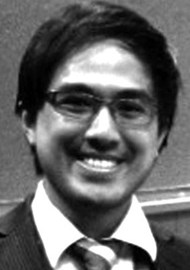Orbital damage is common in maxillofacial injuries and about half of them result in damage to the orbital floor. Suitable material that could be used for repairing the orbital floor includes autografts, allografts and alloplastic materials. The disadvantage of using alloplastic materials such as polydioxanone, polyglactin, titanium mesh and silicone for reconstruction include cost of material, risk of infection and foreign body reaction, while the disadvantage of using allografts are the risk of transmitting disease and their cost. Autografts to reconstruct the orbital floor have been described such as costochondral cartilage, lyophilised dura and bone. However, they are associated with complications such as pneumothorax, prolonged operating time, resorption of graft and donor site morbidity. The authors propose using human nail to reconstruct the orbital floor as excision of human nail is relatively simple and quick with minimal morbidity. The authors performed an animal-based study using cadaveric human nails to reconstruct orbital floor fractures in 18 adult albino New Zealand rabbits. Prior to use, the nails were shaved with a burr to remove the layer of dead keratinocytes. The nail was then sterilised in 0.55% Cidex® solution and washed with sterile 0.9% sodium chloride. The nail was secured into position with 5/0 polypropylene sutures onto the periosteum. The authors reported no macroscopic signs of infection, inflammation or extrusion of the nail over the 12-week period studied. They also reported that it was possible to induce movement of the eye on all reconstructed orbital floors. Histologically, the authors found epithelialisation without metaplasia, improved vascularisation and lack of inflammation or foreign body reaction. They did not find any resorption of the nail either. Overall, an interesting paper and possible future use of fingernail as graft material.




